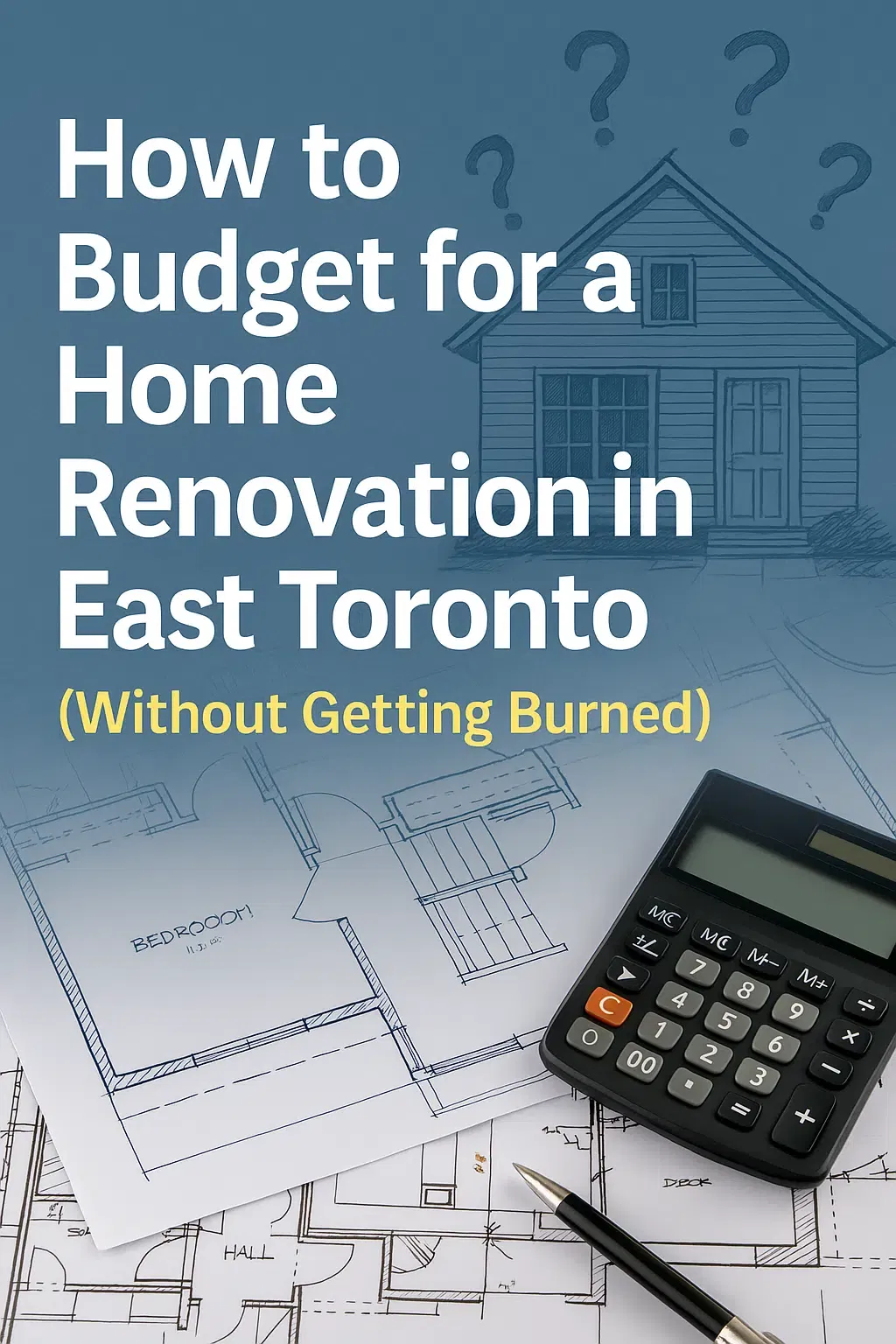Introduction
Budgeting might not be the most exciting part of a home renovation—but it’s absolutely the most important. In East Toronto, where many homes are older and renovation needs can be unpredictable, a solid budget is your best protection against cost overruns and stressful surprises.
At Woodsmith Construction, we’ve met countless homeowners who underestimated what it really takes to renovate properly. This post is here to help you avoid the most common pitfalls and learn how to build a renovation budget that’s realistic, reliable, and tailored to East Toronto conditions.
1. Know the Real Costs in Your Neighbourhood 💸
Renovation costs in East Toronto aren’t the same as in smaller cities or rural areas. Between older homes, narrow lots, and urban logistics, your numbers need to be Toronto-specific.
✔️ Full home renovations: $300–$400/sq ft (and up for high-end or custom work)
✔️ Kitchens: $30,000–$80,000
✔️ Bathrooms: $15,000–$40,000
📌 These are very broad ranges. The custom nature of renovation work—and the mysteries often hidden behind the walls of older homes—make general pricing misleading. It’s crucial to work with a contractor who can break down real numbers for your specific home and scope.
2. Don’t Skip the Buffer 🚨
If there’s one golden rule in renovation budgeting, it’s this: build in a buffer.
✔️ Add 10–15% on top of your estimated budget for unexpected issues—especially with older homes where surprises behind the walls are common.
✔️ This isn’t “padding.” It’s proactive planning. Better to have it and not need it than to run out halfway through your project.
📌 A good contractor will insist on a buffer—and show you where it might come into play.
3. Beware of Too-Good-to-Be-True Pricing ❌
Contractors who underquote to win your business often cut corners or surprise you with change orders later.
✔️ Watch for proposals with unusually low trade or material costs.
✔️ Ask: “How current are your numbers?” Markets change quickly—your quote should reflect that.
✔️ Materials and labour in Toronto fluctuate based on demand, supply chain delays, and regional trade availability.
📌 If a contractor tells you something is out of budget, that’s honesty—not negativity.
4. Prioritize Based on Value, Not Just Desire 📝
Everyone has a wish list—but your budget should reflect what adds value and function to your life.
✔️ Start with structural integrity and energy efficiency (roofing, windows, HVAC).
✔️ Then move to space upgrades (kitchen, bathroom, basement).
✔️ Save luxury finishes for last—they’re easier to scale back if needed.
📌 We help clients match their design priorities with smart financial planning.
5. Work with a Contractor Who Designs to Budget 🎯
This is where design-build shines. When the same team handles both design and construction, your plans are grounded in financial reality from day one.
✔️ We price as we design—so there are no surprises when it’s time to build.
✔️ Our design decisions are always tied to actual trade and material quotes.
📌 At Woodsmith Construction, we don’t believe in overpromising and underdelivering. We design to budget, then build to budget.
Final Thoughts
A home renovation is a major investment—and the best way to protect it is by building a smart, honest, and well-researched budget from the start. In East Toronto, that means knowing the market, expecting the unexpected, and working with professionals who prioritize transparency.
💡 Planning a renovation and not sure where to start with budgeting? Let’s talk. We’ll help you get the numbers right.
📞 Book a Free Consultation Today and Start Building Your Smart Budget Contact Us
📸 Explore our renovation projects and see how budgeting made them possible: Visit Our Project Gallery







